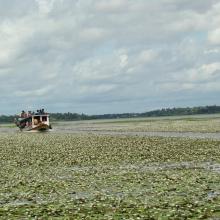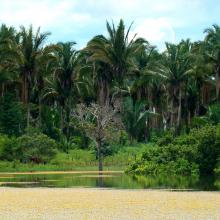

Baixada Maranhense Environmental Protection Area
- Country:Brazil
- Site number:1020
- Area:1,775,036 ha
- Designation date:28-02-2000
- Coordinates:02°58'S 44°59'W
Materials presented on this website, particularly maps and territorial information, are as-is and as-available based on available data and do not imply the expression of any opinion whatsoever on the part of the Secretariat of the Ramsar Convention concerning the legal status of any country, territory, city or area, or of its authorities, or concerning the delimitation of its frontiers or boundaries.
Overview
The Site is located on the north-eastern coast of the country, in the State of Maranhao. It presents rich biodiversity within a complex range of ecosystems, including rivers, their floodplains and estuaries, riverine forests, swamps and lagoons. This mosaic makes the Environmental Protection Area an extremely important conservation unit, since it enables large-scale ecological processes and supports a mangrove area that regulates local fish stocks. The fertile floodplains provide resting, feeding and breeding sites to more than 20 species of resident or migratory waterbirds. The Site is also important for the conservation of globally vulnerable species, such as the maned sloth (Bradypus torquatus), the West Indian manatee (Trichechus manatus) and the red-spectacled amazon (Amazona pretrei). Dolphins and several species of fish use the Baixada Maranhense in their migratory routes, while populations of reptiles and native mammals use the wetlands as a refuge. Extensive and intensive agriculture is the threat that most affects the site, as well as deforestation, erosion, and sedimentation of rivers in the surrounding areas.
Administrative region:
Maranhao
- National legal designation:
- Environmental Protection Area - APA de la Baixada Maranhense
- Reserva Extractivista - Reserva Extractivista del Quilombo de Frechal
- Last publication date:17-02-2020
Downloads
Ramsar Information Sheet (RIS)
Archived RIS
Site map
Additional reports and documents
- Other published literature
